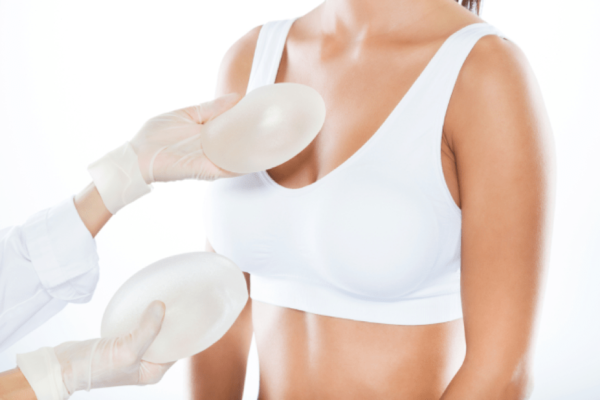
A timeless and classic example of a woman’s body part that has always been considered significant in regards to her beauty is the breasts. Though beauty is in the eyes of the beholder, and can have many faces, breasts seem to be a factor that seems to weigh heavily on the scale of attractiveness regardless of the times or cultures. Unfortunately, they are not something that all women are gifted with, and even when they are they do not always look like the ideal pair. Fortunately, however, is that now we live in a time in which we have the option of undergoing breast augmentation to achieve the ideal breasts in our eyes.

What is Breast Augmentation?
Breast augmentation, or as it is loosely referred, a ‘boob job’, simply means increasing the size of the breast. This can be done through two different methods, them being implants or a fat transfer. There can be a variety of reasons why women would feel they need this procedure, such as;
- Mothers whose breasts have changed in appearance after breastfeeding; usually the breasts appear ‘deflated’.
- Women who have undergone the removal of breast cancer which has left one or both of the breasts significantly reduced in size.
- Asymmetric breasts
- Tubular breasts
- Women who feel their breasts are too small
Boob Job Procedure
There are a few critical steps that you must choose and take before undergoing the procedure. They are listed for you below. Regardless of what options you choose, general anesthesia will be administered, and the standard length of the procedure is 2 hours for a non-complex case. Preoperative marking will also be done. Make sure to ask your plastic surgeon the following questions.
Location of Incision

There are three possible locations for your incision.
- The first and preferred incision method is inframammary (IMF) due to a variety of reason such as;
- Less likely to cause complications.
- The implant is more easily manipulated by the surgeon, therefore it is placed much more exact than through the other incisions.
- If a second surgery is needed it is easier to do it through the previous incision site.
- If you know your body generally leaves thick scars this may not be the best option for you, though over time most people’s scarring will fade to a light, barely visible line. It will be hidden by the breasts natural crease as well.
- The second option is periareolar (the bottom of the nipple).
- The scarring has the potential to blend into the nipple due to the difference present between the nipples’ color versus the skins’.
- More likely to cause CC.
- The final method is transaxillary (through the armpit).
- This offers less noticeable scarring due to its location.
- This method is more difficult for the surgeon to manipulate the implant with, therefore exact results are more difficult to achieve.
B. Location of Implant
There are two possible options for the location of the implant. The primary and preferred location most surgeons have is submuscular (below the muscle) due to a variety of factors such as;
- A more natural appearance
- Less likelihood of sagging
- If more muscular, it may distort the shape of the implant or cause discomfort.
The secondary location is subglandular. This location can have increased sagging in the later years of the implants course, and may show rippling as well as the nipple’s numbness increased.
C. Texture

There are two options for texture, the preferred one being smooth. This is particularly important as one of the most common complications with breast implants is capsular contraction (CC). This is when the natural scar tissue pocket that the body forms around the implant (which is completely natural when you introduce a foreign item into your body and is what helps give the new breast its shape) hardens over time. This can cause the breasts to get that artificial appearance, as well as make them firm to the touch. More significantly, in extreme cases it can cause pain and discomfort if the pocket becomes too tight. Smooth implants are significantly less likely to cause CC.
The second option are textured implants. The main benefit of these implants is that they claim that they do not ‘slip’ and therefore prevent sagging. However, it is important to keep in mind the increased likelihood of CC. They are also more likely to cause Anaplastic Large Cell Lymphoma (ALCL), a type of cancer of the immune system.
D. Silicone or Saline?
This is the most common question that most people have when it comes to choosing the right implant. They both offer benefits that you should consider when choosing the correct implant for you, such as;
| Silicone | Saline |
| Most people claim the texture of this implant offers the most similar texture to real breasts when they are touched. | If the implant ruptures, the body will simply reabsorb the saline, which is just salt water. The boob will immediately deflate, therefore it will be easy to know if an implant has ruptured.
|
| It seems to offer the most natural results afterwards.
|
They are usually cheaper than silicone implants.
|
Saying this, both also have possible downsides such as;
| Silicone | Saline |
| If the implant ruptures, it is much more difficult to tell. Though the body will not absorb the silicone, the leaking silicone might migrate to other parts of the body if not caught early enough and cause further complications. This is why it is recommended that you get an MRI 3 years after your initial surgery and every 2 years after to check for a possible rupture. This is an extra cost. | Some people have said they can hear the water in the breast swirling when they move.
|
Alternative Option for Breast Augmentation Surgery
Fat Grafting

This technique is relatively new to the world of cosmetic surgery, therefore it is less researched and the ideal technique has not been perfect. The main idea behind this is moving extra fat from one place in your body that tends to carry most of your fat, such as your thighs, stomach or buttocks. This is usually done through liposuction. Afterwards the fat is treated through a method in which the pure fat cells are separated from other substances and fluids that are suctioned out. Once the pure fat is all that is left, that fat is injected into the desired area (in this case, the breasts), until they are full.
This procedure offers two benefits in one, due to the fact that liposuction and breast enhancement is done at once. It also is significantly safer due to the fact that the body will not reject its own fat cells, so no adverse reactions should occur. A significant study has also recently come forward saying that women who undergo this procedure during ovulation retain almost 50% of fat, while women outside of their ovulation window will only retain 29-35% on average.
This procedure may seem perfect, however, results can never be fully guaranteed and therefore downsides exist. Due to the fact that the body can reabsorb the fat, exactly how much fat will survive can never be truly estimated. It also tends to carry a heavier price tag than breast implants. Most significantly, the breasts can only expand so much before they become constricted. Excessively constricted fat is less likely to survive, so your surgeon will overfill the breasts knowing a good portion of the fat will die, but they cannot bring you up multiple cup sizes. At most expect half to a full cup increase in size. If your goal is to go up in size more than this, it is recommended to go with breast implants instead.
Boob Job Recovery
It may seem like the hard work is over after sorting through all the options of what you want and what your surgeon advised, as well as after having undergone the procedure, but this stage can be considered the most critical in what the final appearance of your breasts will be. Proper care of the new breasts is crucial. These will be the general steps of recovery, but can vary between each surgeon’s preference.
- Immediately after surgery, your new breasts will be wrapped in a surgical bra to keep them in place for the first few days. You will have the most swelling during this stage, though there shouldn’t be significant bruising. You will also be prescribed antibiotics which you must finish the full course through to prevent any infection of the incision site. Pain killers may also be prescribed to help with the initial pain.
- At your follow up consultation three days later, your breasts will be checked for progress and bandaging will be changed.
- The next follow up will be about seven days after surgery. At this time, you will be switched from your surgical bra to a sort of holster bra. This will help support and guide your breasts into their new shape. An elastic band will also be applied around the top of the breasts that will be tightly wrapped to help push the breasts down. You will keep this on for the first month. About 80% of swelling should also disappear after the first month.
- You will be able to shower about 10 days after your surgery.
- Avoid strenuous exercise for 4-6 weeks. Your surgeon will give you a more exact timeline.
- After your holster bra is removed, you will be allowed to wear sports bras. Nothing with an underwire can be worn for 6 months after surgery.
- You may begin massaging the breasts to help expand the pocket and prevent CC three months after surgery.
Boob Job Before and After
As you can see there is a significant difference between the original size and shape of the breasts as compared to the final results after breast augmentation.


As you can see, a boob job offers a significant possibility in being able to change your breasts appearance. There are two options for how you want to achieve an increased breast size, the largest factor being how much you would like the sizing to change. For filling about a cup size, a fat transfer would be the most ideal. If you want to go up more than one cup size, it is recommended you get implants, or have repeat procedures of the fat transfer.
For best results, you can also combine both procedures. It is crucial not only to pick all the correct options to suit your idea of the perfect breasts, but to follow post-operative care instructions to achieve the best results. If you feel prepared to begin this process towards your new and improved breasts, feel free to contact Seoul Guide Medical who will put you in contact with some of the most renowned plastic surgeons in Korea. For some of the most natural results possible, get your breast augmentation in Korea.


